
In Images: NASA's Mission to Arctic Frontier
To boldly go...

A NASA mission has gone boldly into the frigid waters of the Arctic Ocean. The space agency's first oceanographic research voyage to the top of the world is about half-way finished.
The voyage, known as the Impacts of Climate on Ecosystems and Chemistry of the Arctic Pacific Environment mission (ICESCAPE ), is investigating the impacts of climate change in the Chukchi and Beaufort Seas along Alaska's western and northern coasts.
The first leg was completed during the summer of 2010, and the second year of sampling is looking for year-to-year differences of the Arctic waters. But it's not all business on the research vessel, the U.S. Coast Guard icebreaker Healy, as there were several mission milestones that the team celebrated in style.
Meet the icebreaker
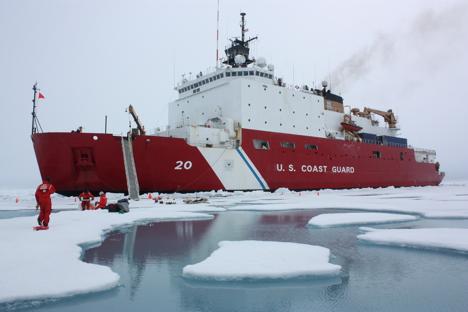
The mission involves 47 scientists who spent five weeks exploring parts of the Arctic Ocean that were previously too ice-covered for ships to penetrate.
This year's waters should be easier for the U.S. Coast Guard Cutter Healy to penetrate. Healy is the platform for the ICESCAPE mission, and is the United States' newest and most technologically advanced polar icebreaker.
The Healy is built for scientific research and has 30,000 horsepower of icebreaking capability.
Sampling seawater
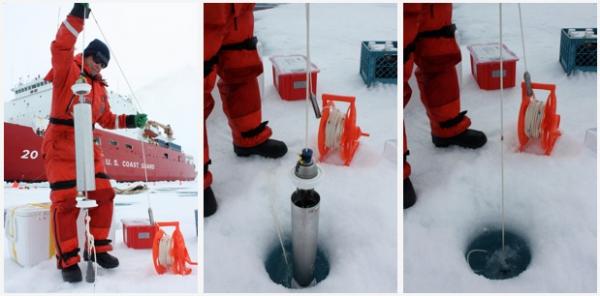
ICESCAPE scientists are well acquainted with water. They sample water over the starboard side of the Healy, over the bow of a small deployable boat, and through holes in the ice. They sample at the ice-ocean interface and at depth, and the water from melted ice cores.
Get the world’s most fascinating discoveries delivered straight to your inbox.
At ice stations, scientists lower canisters on a rope to a specific depth, pre-measured and marked on the rope. A slug then travels down the rope, contacts the canister and triggers it to shut, locking water inside. Scientists reel in the canister and empty its contents into bottles for transport back to the Healy's lab.
Back in the lab the team looks for colored dissolved organic matter, dissolved organic carbon, salinity, suspended particulate matter, nutrients and chlorophyll. Other groups look for measures such as alkalinity, or take a look under the microscope. All of these things are clues about the Arctic's health, and scientists will be able to track how they change over the years.
Under pressure
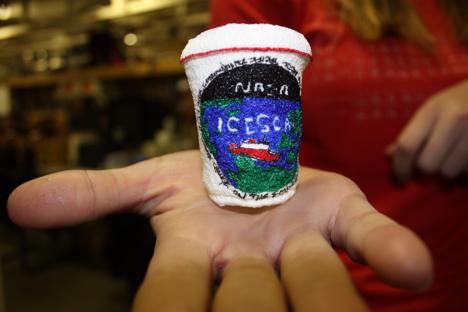
On July 11, the Healy cruised northeast in the Chukchi Sea , out of the continental shelf's shallow water and into the Canada Basin's deep-water abyss. Over the course of the day they went from sailing in water just 197 feet (60 meters) deep to more than 6,500 feet (2,000 m) deep.
The crossing called for celebration. A common pastime at sea involves deep-water physics and Styrofoam products such as cups. The scientists adorned cups with commemorative statistics, colorful logos and Arctic icons.
The cups hitched a ride down to a depth of 6,900 feet (2,100 m) where the massive pressure crushed them to about a quarter the size of the original.
The instrument used to lower the cups also collected the mission's first data from the deep-water basin. Last year, thick southward moving ice prevented access to the region.
Critters below the ice
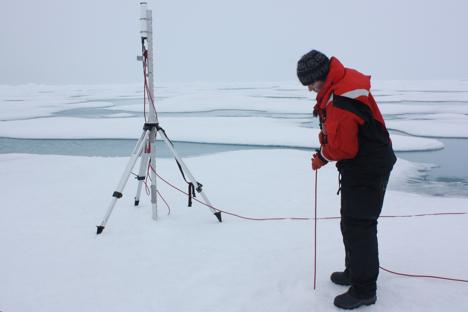
At ICESCAPE's ice stations, the team quantified the light field beneath the ice with optical instruments.
"Light is important for biology and primary production, for determining what kind of critters grow in and below the ice," said team member Karen Frey in a NASA statement.
The team also collected parts of the ice that they could then melt, filter and measure its biogeochemical variables: salinity, alkalinities, chlorophyll, oxygen isotopes and suspended particulate matter. The scientists also collected mud to measure the amount of chlorophyll present, an indicator of the food web's health .
Ice party

After completing their 100th sampling station in 15 scientists, the scientists took a day to cut loose. On July 13, "ice liberty" festivities included a penguin-costumed unicycle rider, iceball fights and a game of tug-o-war with the Healy. Needless to say, the ship won.
Polar Bear
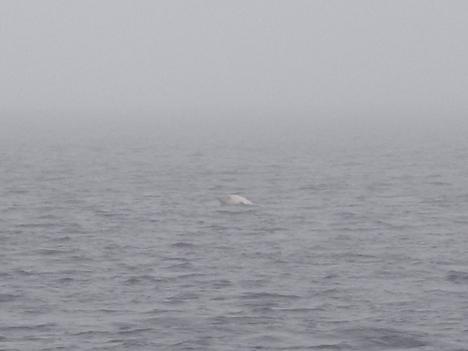
On July 17, U.S. Coast Guard crew and scientists powered away from the Healy on the ship's deployable Arctic Survey Boat for a few hours of routine optical measurements. The boat's driver maneuvered through the murky fog hovering over the Arctic Ocean and steered to avoid a block of ice bobbing on the ocean's surface, not an uncommon sight in the Beaufort Sea. About 100 feet (30 m) from the object, crew and scientists on board realized that the "ice" was not ice at all. [Gallery: An Expedition into Iceberg Alley]
The close up, eye-level look with the polar bear was a reminder to the scientists that they are visitors working in the bears' territory, and to always keep a watchful eye on their surroundings. The crew quickly pointed the boat elsewhere and the science team finished sampling away from the curious bear.


